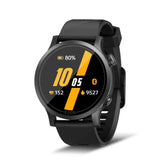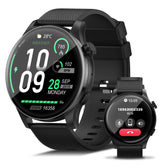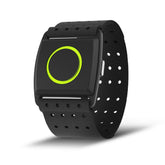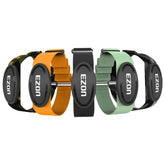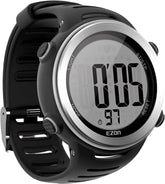Fitness Tracking for Different Genders: Tailored Approaches
In the realm of fitness, understanding the unique needs and goals of men and women is essential for effective training and health management. As fitness tracker technology continues to evolve, manufacturers are increasingly designing devices with gender-specific features to better cater to these distinct requirements. In this article, we will explore how fitness tracker watches are tailored for men and women, focusing on monitoring heart rate, steps, and other health metrics.
Understanding Gender-Specific Fitness Needs
1. Fitness Goals
Men and women often approach fitness with different goals in mind. While men may focus on building muscle mass and strength, women might prioritize weight loss, toning, or overall health. Recognizing these differences in objectives can help guide the design of fitness tracker features.
2. Physiological Differences
Men and women have different physiological characteristics that can impact fitness tracking:
-
Body Composition: Generally, men tend to have a higher muscle mass percentage, which can affect calorie burn rates and metabolism. Women's bodies typically have a higher fat percentage, which can influence weight loss goals and overall fitness strategies.
-
Hormonal Variations: Hormones can influence energy levels, mood, and physical performance. For example, menstrual cycles can affect a woman’s energy levels and exercise capacity, which is why some fitness trackers now include features to help women track their cycles and adjust their fitness plans accordingly.
Tailored Features in Fitness Tracker Watches
1. Fitness Tracker Watch for Women
Fitness tracker watches designed for women often include features that specifically address their unique fitness needs:
-
Cycle Tracking: Many fitness tracker watches for women offer menstrual cycle tracking, allowing users to log symptoms, predict cycles, and monitor any related physical changes.
-
Caloric Needs and Macro Tracking: These devices may provide personalized nutrition tips based on the user’s activity and physiological needs, helping women meet their weight management goals effectively.
-
Heart Rate Variability (HRV): Some women-focused trackers monitor HRV, which can help assess stress levels and recovery, providing insights into overall health and well-being.
2. Fitness Tracker Watch for Men
Fitness tracker watches for men are designed to support their specific fitness objectives and physiological characteristics:
-
Strength Training Metrics: Many models focus on tracking metrics relevant to strength training, such as weight lifted, sets, and reps, helping users optimize their workouts for muscle gain.
-
Advanced Performance Metrics: Men’s fitness trackers often include features like VO2 max estimates, recovery time suggestions, and more detailed heart rate monitoring tailored for intense workouts.
-
GPS and Outdoor Features: For those who engage in outdoor activities like running or cycling, men's fitness trackers frequently come with advanced GPS features, providing insights into pace, distance, and elevation.
The Importance of Personalization
While gender-specific features are essential, it’s also crucial to recognize that individual preferences and needs vary widely within each gender. Personalization in fitness trackers can enhance their effectiveness. Here are some ways to ensure the best fit:
-
Customizable Goals: Users should be able to set personalized fitness goals based on their individual preferences and lifestyles, whether it’s weight loss, muscle gain, or general fitness improvement.
-
User-Friendly Interfaces: A fitness tracker that is easy to navigate encourages users to engage with its features regularly, keeping them motivated and on track.
-
Integration with Apps: Many fitness trackers sync with health and fitness apps, allowing users to track their progress and access additional resources tailored to their specific needs.
Conclusion
Understanding the unique fitness needs of men and women is crucial for effective health management and goal achievement. Fitness tracker watches are increasingly designed with gender-specific features that cater to these differences, whether it’s a fitness tracker watch for women addressing cycle tracking and caloric needs or a fitness tracker watch for men focusing on strength training and performance metrics. By leveraging these tailored approaches, individuals can optimize their fitness journeys, stay motivated, and achieve their health goals more effectively. Choose the right fitness tracker watch that aligns with your needs, and take the next step toward a healthier lifestyle!
